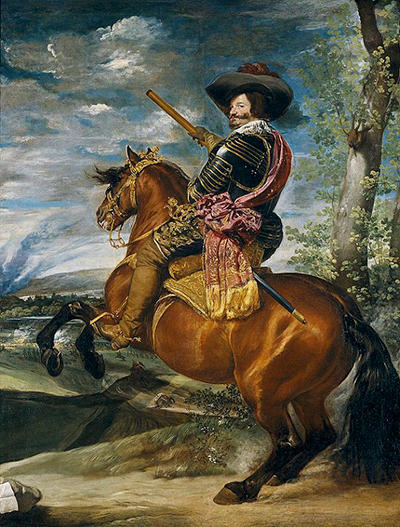Equestrian Portrait of the Count Duke of Olivares
This commission for the Count Duke of Olivares continued Velazquez's work in the genre of equestrian portraits

This specialised genre requires considerable study and practice, with some evidence still remaining of Velazquez's own work in perfecting his accuracy with horses. He would tend to sketch them on their own, before adding them into a more complex oil painting later on.
Count Duke of Olivares was painted by Velazquez on several occasions, including a full length portrait in 1624 at the time that he had held power for only three years and was busy trying to consolidate his position.
The Count Duke is also sometimes known as Don Gaspar de Guzmán y Pimentel Ribera y Velasco de Tovar and he also held the title of Duke of Sanlúcar la Mayor, Grandee of Spain. His reign as Prime Minister of Spain is considered by many to have been troubled and unsuccessful, taking on too much both home and abroad, leading to domestic revolts and endless war.
There have been huge numbers of equestrian portraits across all of art history and they were particularly frequent during the Renaissance and Baroque periods. Some of the most famous examples of this include The Four Horsemen of the Apocalypse by Albrecht Durer, An Arab Horseman at the Gallop by Eugene Delacroix, Whistlejacket by George Stubbs and Etude of Horse by Peter Paul Rubens.
Artist Velazquez portrays the Count with strength and authority, lifting him up onto the horse, looking down on the viewer, almost as if with contempt. The painter made several sketches of horses from this angle in chalk-based drawings prior to starting this painting, and so would have been comfortable in putting together this composition.
The background to this painting helps to give the impression of a powerful leader looking out over his own land, not portraying the difficulties that he was to experience during his leadership. Subjects that dictated the composition and style of their portraits could, to a certain degree, control how history would judge them.